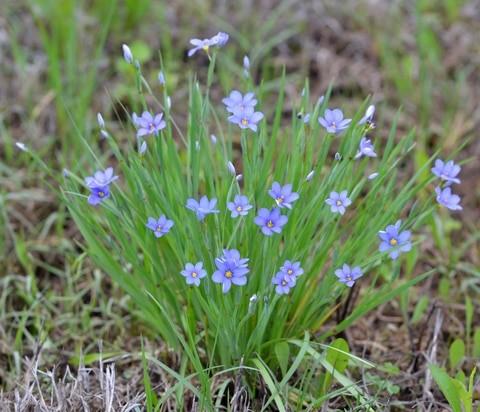Blue-eyed grass (Sisyrinchium angustifolium) is a native herbaceous perennial grass native to south Florida and the eastern United States all the way up to Quebec and as far west as Texas. This native grows naturally in meadows, damp fields, open woods, moist pinelands, swamp edges, and grassy roadsides. This small ornamental grass produces star-shaped flowers, rising above the delicate grass-like clumps. The blue flowers appear in spring and have a yellow center.
This native grass self-seeds and can be divided after the bloom season every two to three years using a sharp-edged tool to cut the clumps into smaller pieces. Pieces should be planted in a moist location until roots are able to develop. If left along, individual plants eventually become at least 1 foot wide, but never taller than 6 inches. Use this plant along walkways, edges of planting beds, and in mass. This native grass is also a wildlife attractor, attracting bees and other pollinators to its blue flowers. Like many other native Florida species, Native Americans valued this plant for its medicinal value and used the roots of this plant for the treatment of stomachaches, and various other ailments.
The blue-eyed grass is little but cute and may be just the interesting piece you need for your garden.
This plant column is a joint effort by all at In the Garden, Sanibel’s garden center, located at 3889 Sanibel Captiva Rd., Sanibel Island, Florida.
